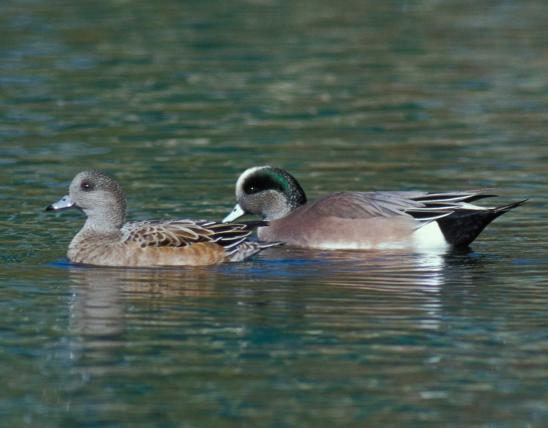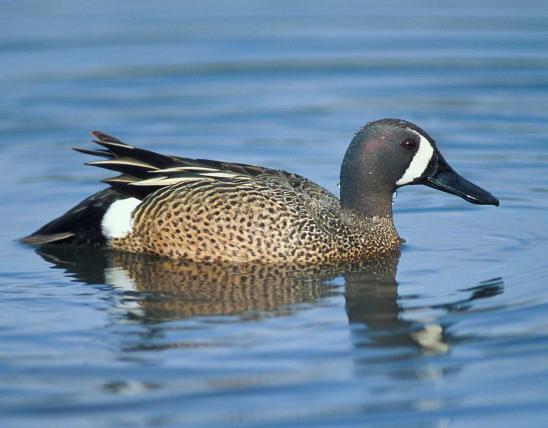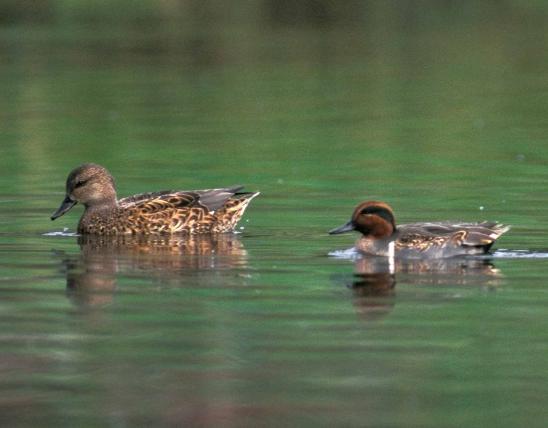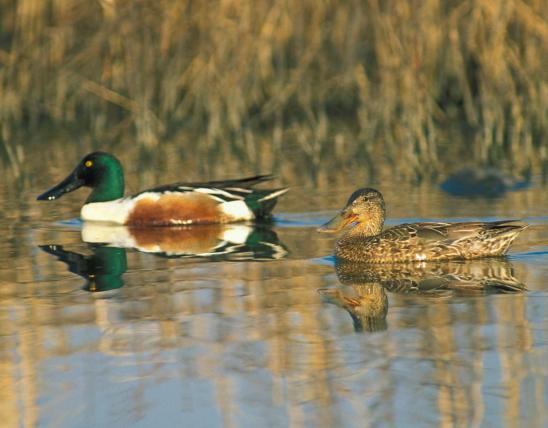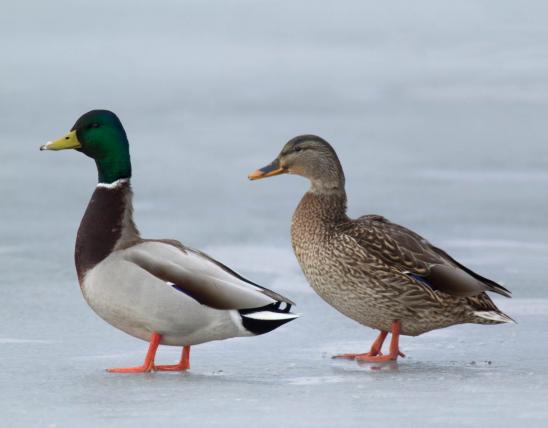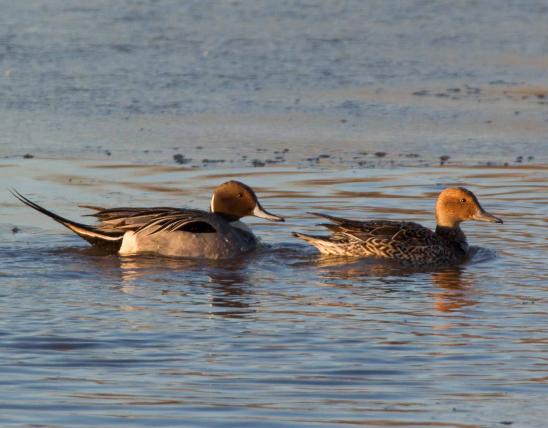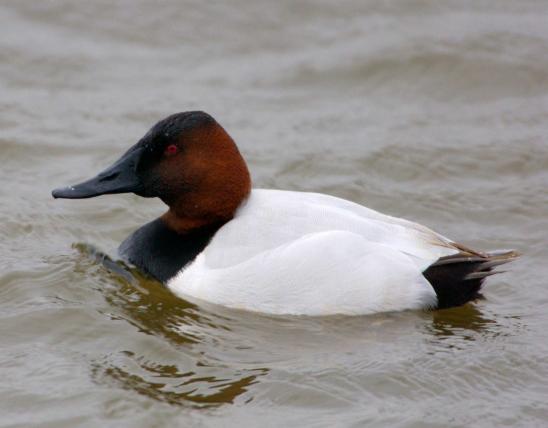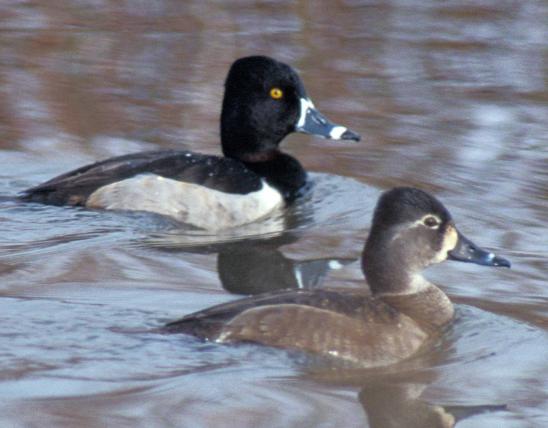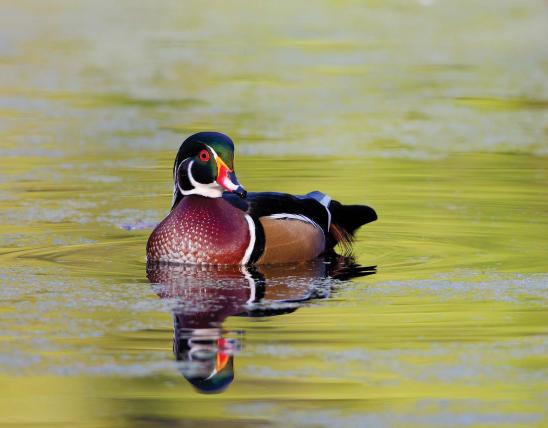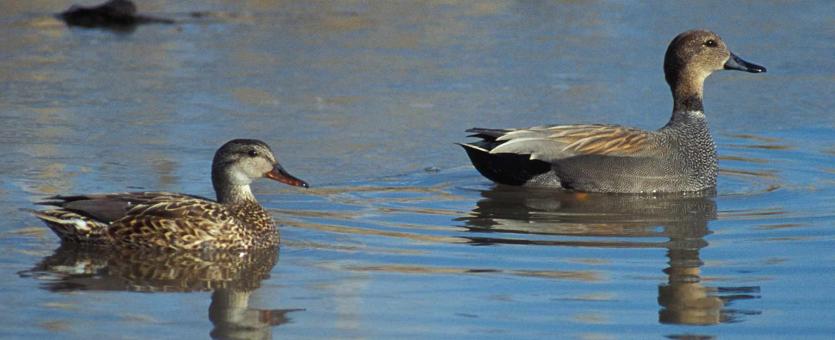
Compared to many other male ducks, the adult male gadwall is rather drab, with a finely barred, grayish body plumage, a fairly light, grayish-brown head, a black rump, and a prominent white speculum (wing patch). The female is brown and similar to a female mallard, except the gadwall has a white speculum and belly. The female quacks, and the male makes a low nasal mepp.
Similar species: To separate gadwall from other ducks, note the male’s drab color that extends all the way to the black rear end (there’s no white patch in front of the black). To separate female gadwall from female mallards, note the gadwall’s white speculum and belly; also, its bill is thinner than the mallard’s and it has an orangish stripe along the edge.
Length: 20 inches (tip of bill to tip of tail).
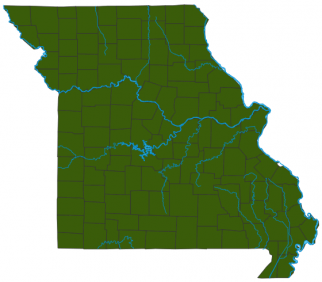
Statewide.
Habitat and Conservation
Look for gadwall in marshes, swamps, sloughs, streams, ponds, lakes, and reservoirs. They usually forage in shallow water. They also sometimes feed in cropland. Like other dabbling ducks, they can take flight by jumping directly from the water into the air. Compared to those of bay or diving ducks, their wings are relatively large in relation to their body weight, giving them good lift, so they don’t need to flap across the water surface before taking flight.
Food
Gadwall forage near the surface for aquatic vegetation and invertebrates in shallow water. They sometimes steal food from diving ducks when they reach the surface. Gadwall tend to increase their percentage of animal material during nesting season, when they require more protein.
Status
Common migrant. Summer observations of gadwall are rare, but it has been known to nest in the state. Uncommon winter resident occurring primarily in southern Missouri.
Life Cycle
In Missouri, we usually see gadwall as they migrate in spring and fall. They spend winters in the southern United States and Mexico, and they breed to our northwest in the famous “prairie pothole” region in the U.S. northern Great Plains and the Canadian prairie provinces. The many shallow wetlands in these prairies have been called “duck factories.” As breeding grounds they are crucial for the survival of many North American waterfowl.
Human Connections
Gadwall are one of the most popular species shot by duck hunters, and their harvest is carefully managed by international, federal, and state game laws. Preserving the wetlands they require is important for maintaining their healthy populations.
Ecosystem Connections
Gadwall help control the populations of the plants and small aquatic animals they eat, and as eggs, young, and adults they are eaten by a variety of predators. Although adults can fly and swim away when threatened, their eggs and young are much more vulnerable.
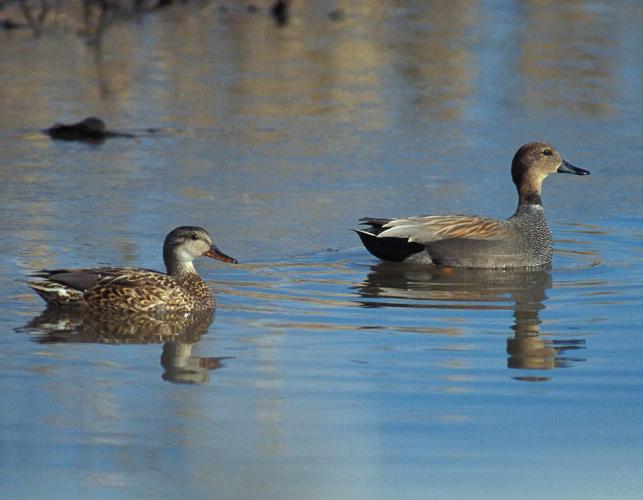

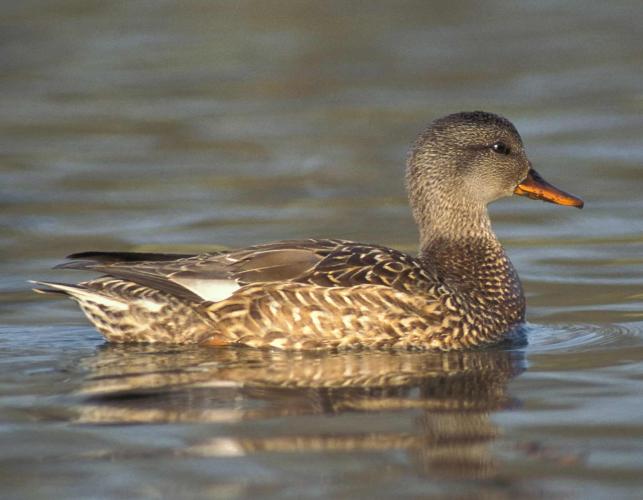
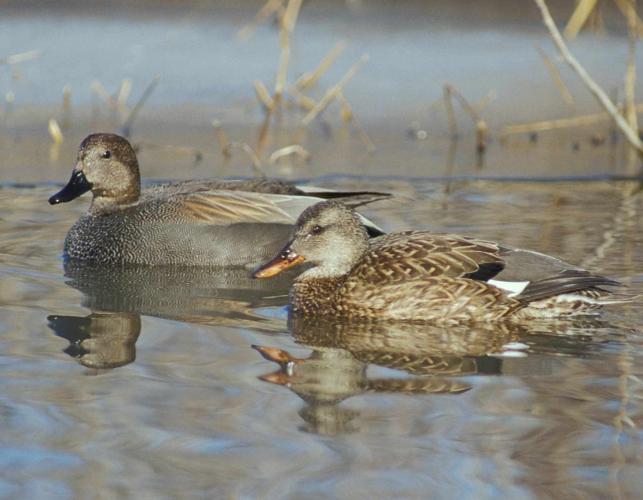
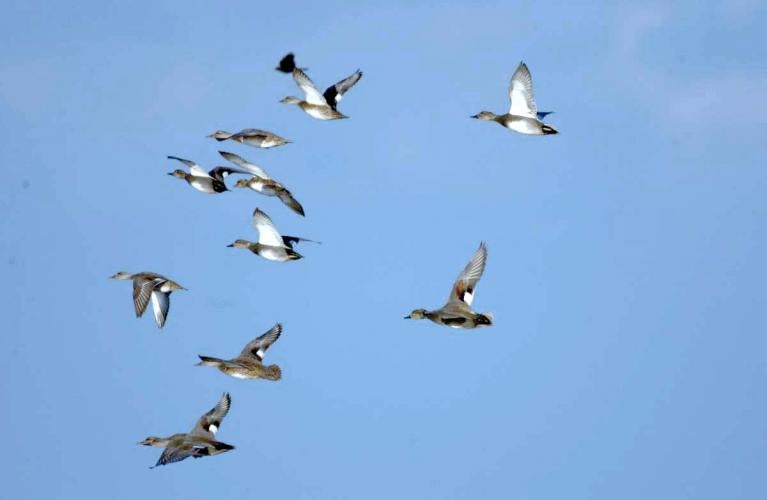
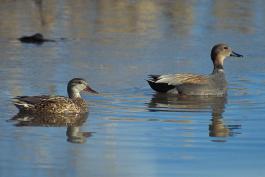
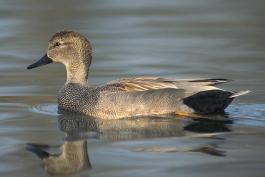


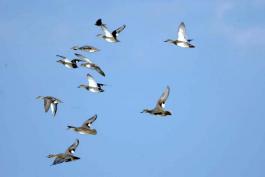
Where to See Species
About 350 species of birds are likely to be seen in Missouri, though nearly 400 have been recorded within our borders. Most people know a bird when they see one — it has feathers, wings, and a bill. Birds are warm-blooded, and most species can fly. Many migrate hundreds or thousands of miles. Birds lay hard-shelled eggs (often in a nest), and the parents care for the young. Many communicate with songs and calls.






















